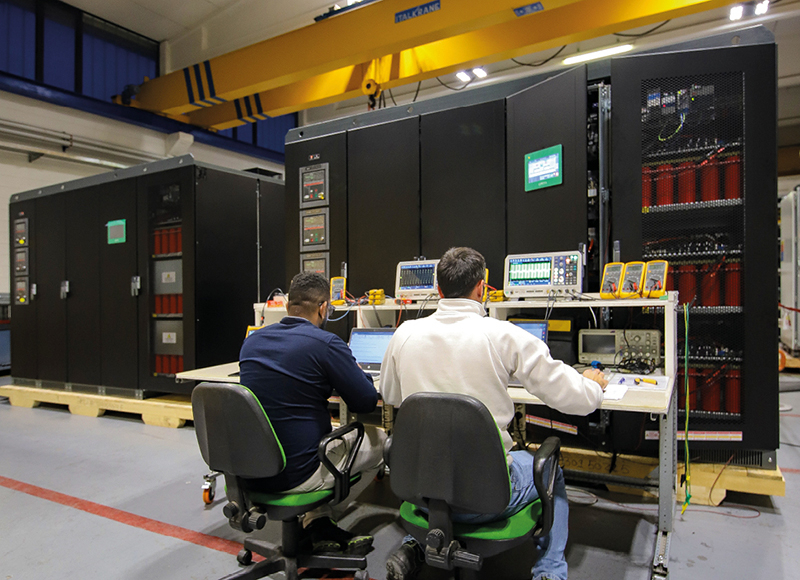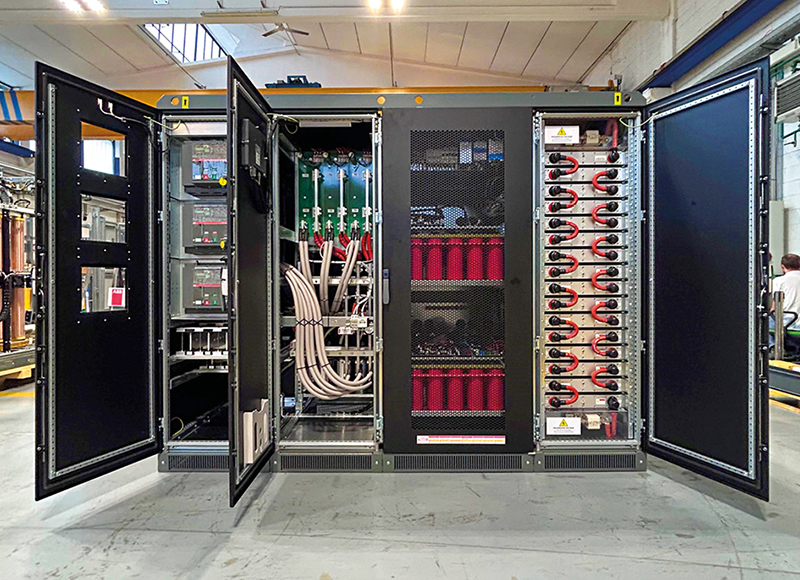The quality and reliability of our products has always been a principal feature, a goal that our project engineers pursue every day with controls and tests performed continuously.
In this case, we wanted to check the reliability of some readings of the tools on board the Oxygen by comparison with class A tools, according to the CEI EN 61000-4-30 standard. One was mounted at the input stage and one at the output stage of an Oxygen 500-10-40 that was installed and operating perfectly in our production plant. There are two tools for comparison: LINETRAXX PEM735 of Bender; the clocks of each are synchronised with that of the Oxygen panel.
The purpose of the test is to check the correctness and precision of the voltage sag readings. Contrary to what you might think, voltage sags often occur on electric lines considered to be of good quality, such as Italian ones.
We have identified a single-phase voltage sag entering the second phase as can be seen from the screen-shot of the tool. In this case, the second phase has a residual tension of 88.54%.
Here, we’d like to recall that the definition of a voltage sag is a change in voltage starting at -10% of the nominal voltage up to -95% (i.e. residual voltage of 5%) with a duration of 10ms to 1 minute.
We detect the event, accurately, in the operator’s panel mounted on board the Oxygen.

Oxygen is available in two models:
- Oxygen 10-40 (from 200 to 3200kVA) with input voltage compensation ±10% (continuous) and compensation for voltage sags of up to -40% of the nominal voltage per 1 minute.
- Oxygen 15-50 (from 200 to 2000kVA) with input voltage compensation ±15% (continuous) and compensation for voltage sags of up to -50% of the nominal voltage per 1 minute.








